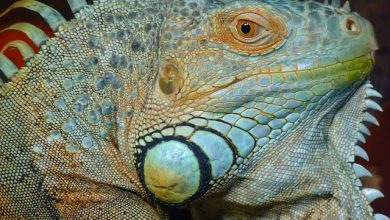How to Determine Which Chameleon You Should Get – The Tye-Dyed Iguana

If you think all chameleons are the same, then you may be surprised to know that youâve been misled. The truth is that there are several different types of chameleons commonly kept as exotic pets, and they each have distinct features that require specific kinds of care.
The good news is that you can easily learn more about the types of chameleons before you pick one up to take home. Youâre in the right place to discover which kind of chameleon is right for you. Letâs get started.
First, do you really want a chameleon?
Chameleons are not known as easy pets to care for. In fact, theyâre a bit picky and have a few care quirks that are the same for any chameleon you get. Here are the big things to know, just in case the right chameleon for you happens to be no chameleon at all.
Keep away from glass
Glass terrariums are pretty standard enclosures for a variety of herps. To keep a chameleon, however, you have to have an enclosure with mesh screens instead. Chameleons require more airflow than most other reptiles, and they will die in a glass enclosure.
Must climb
A chameleonâs feet are designed for gripping branches in order to get around. They are an arboreal species, meaning that their native habitat is on trees. In addition to requiring a terrarium with good airflow, they also need a tall space with plenty of branch-like objects or plants to climb. Oh yeah, and they donât particularly like being touched or handled.
Water snob
You may be surprised to learn that chameleons are picky about their water sources. Unlike other reptiles, you cannot simply put a water dish in their enclosure. In fact, if you do, your chameleon will snub it. They do not drink standing water.
If you decide that a chameleon is the right exotic pet for you, youâll need to heavily spray the leaves and branches in its enclosure with water at least once a day, and more for certain species. Chameleons drink from the water dripping off leaves and other habitat décor.
Types of chameleons
Okay, now that you know the basics, hereâs where the various types of chameleons differ.
Veiled chameleon

The veiled chameleon is the most commonly kept pet chameleon. It is also most often recommended for beginners because it adapts well to captivity and requires slightly less humid and moist conditions than other chameleons. You only need to spray its enclosure heavily once a day to provide drinking water. That being said, veiled chameleons grow fairly large and require a lot of space. They eat a combination of insects and green leafy vegetables.
Panther chameleon

The panther chameleon is similar to the veiled chameleon. It, however, requires higher humidity levels, which can be difficult to maintain while keeping airflow going. This chameleon needs its enclosure misted with water a couple times a day in addition to one heavy spraying, and it eats both insects and green leafy vegetables. Panther chameleons do not handle stress well, are highly territorial, and tend not to live long in captivity.
Jacksonâs chameleon

If youâre looking for a chameleon that takes up less space, Jacksonâs chameleon is a smaller species. But itâs tiny size doesnât necessarily make its requirements easier. It needs its enclosure heavily sprayed three times every day. (Of course, you can put a watering system on a timer to meet this need.) Unlike the veiled chameleon and panther chameleon, Jacksonâs chameleon eats only insects, no vegetables.
Come see our chameleons at The Tye-Dyed Iguana. You can ask our team members questions about how we take care of them.



